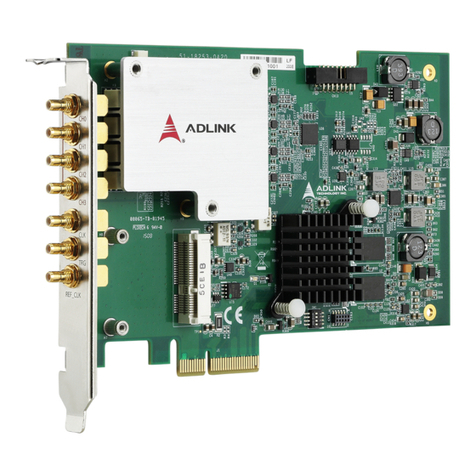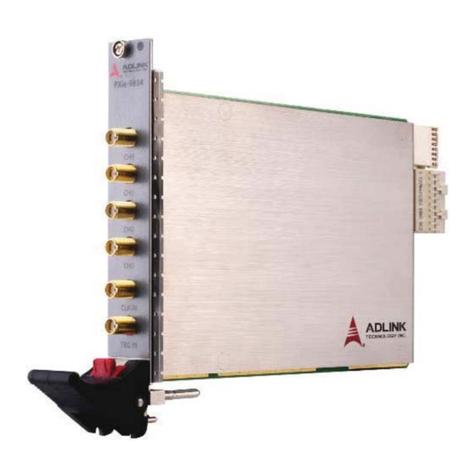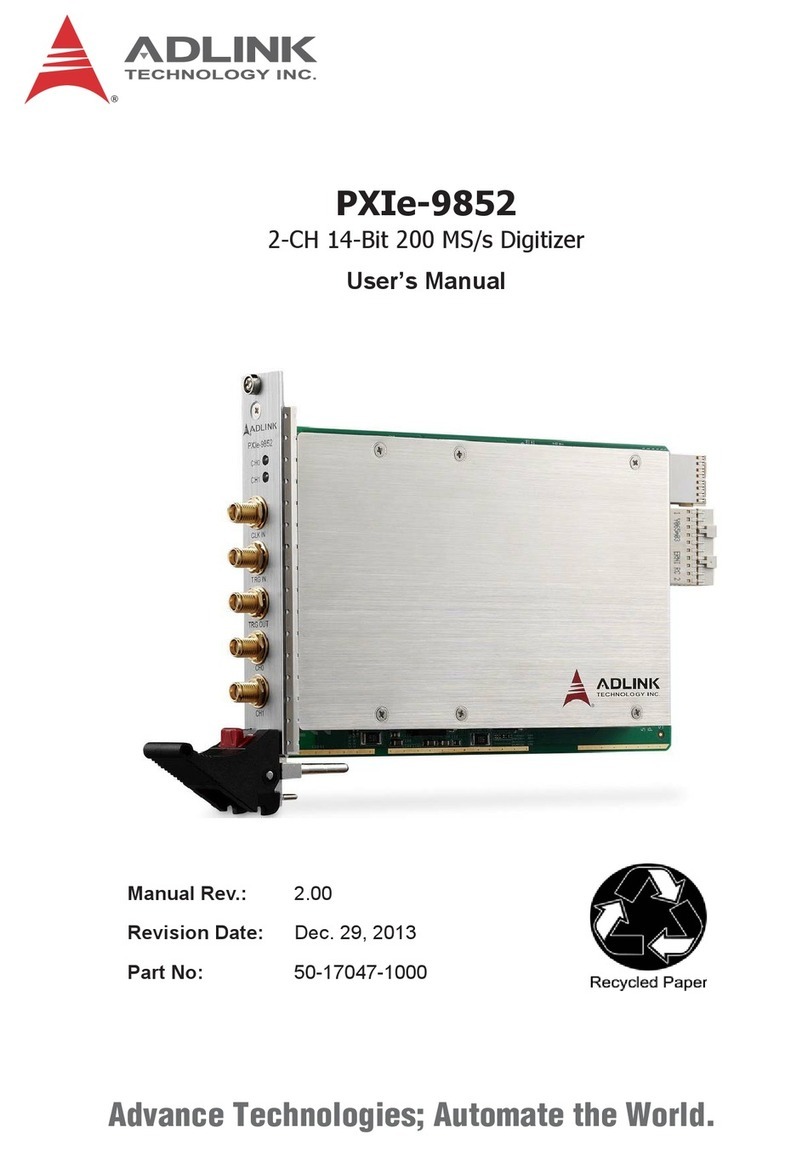
iv List of Figures
List of Figures
Figure 1-1: PXI-9816 Bandwidth Chart ........................................ 5
Figure 1-2: PXI-9826 Bandwidth Chart ........................................ 5
Figure 1-3: PXI-9846 Bandwidth Chart ........................................ 6
Figure 1-4: PXI-9816 FFT with ±0.2 V Input Range..................... 7
Figure 1-5: PXI-9816 FFT with ±1 V Input Range........................ 8
Figure 1-6: PXI-9826 FFT with ±0.2 V Input Range..................... 9
Figure 1-7: PXI-9826 FFT with ±1 V Input Range...................... 10
Figure 1-8: PXI-9846 FFT with ±0.2 V Input Range................... 11
Figure 1-9: PXI-9846 FFT with ±1 V Input Range...................... 12
Figure 2-1: PXI-98x6 Mechanical Drawing................................. 19
Figure 2-2: DAQPilot Main Interface .......................................... 21
Figure 2-3: DAQMaster Device Manager................................... 22
Figure 2-4: Legacy Software Support Overview ........................ 23
Figure 3-1: PXI-98x6 Functional Block Diagram ........................ 25
Figure 3-2: Analog Input Signal Block Diagram ......................... 26
Figure 3-3: Basic Acquisition Timing Of Digitizer ....................... 28
Figure 3-4: PXI-98x6 Timebase Source and Architecture.......... 29
Figure 3-5: Configuring Different Sampling Rate of a Digitizer. . 31
Figure 3-6: PXI-98x6 Trigger Architecture ................................. 32
Figure 3-7: External Digital Trigger Polarity and
Pulse Width Requirement. ....................................... 33
Figure 3-8: Analog Trigger Conditions ....................................... 35
Figure 3-9: TRG IO Output Signal Timing.................................. 36
Figure 3-10: Post-trigger Acquisition............................................ 37
Figure 3-11: Pre-trigger Mode Operation ..................................... 38
Figure 3-12: Pre-trigger Mode Operation ..................................... 38
Figure 3-13: Middle-trigger Mode Operation ................................ 39
Figure 3-14: Delay-trigger Mode Operation ................................. 39
Figure 3-15: Re-trigger Mode Operation. ..................................... 40
Figure 3-16: Scatter-Gather DMA for Data Transfer .................... 41
Figure 3-17: SSI Architecture....................................................... 43
Figure 3-18: SSI_TRIG1 Input and Output Timing
Characteristics ......................................................... 44
Figure 3-19: SSI_TRIG2 Output Timing....................................... 45
Figure 3-20: SSI_TRIG2 Input Timing Requirement .................... 45
Figure 3-21: SSI_START_OP Output and Input Timing
Characteristics ......................................................... 46































